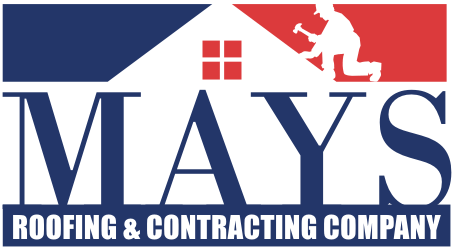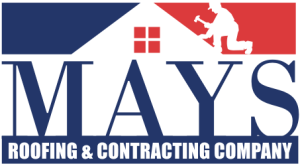What Are the Best Tips for Painting Your Roof to Extend Its Lifespan?
Painting your roof is a practical solution to enhance its lifespan and improve its aesthetic appeal. An effective roof paint job can significantly extend the life of roofing materials while offering protection against severe weather, UV rays, and potential leaks. Here are some essential tips for successfully painting your roof.
Understand the Benefits of Roof Painting
Before starting the project, it’s crucial to comprehend the value of roof painting. The benefits include:
- Protection Against Elements: Quality roof paint forms a protective barrier, shielding the roof from moisture, UV rays, and other environmental factors.
- Enhanced Aesthetics: A freshly painted roof can improve the overall curb appeal of your home, increasing its property value.
- Improved Energy Efficiency: Reflective roof paints can lower indoor temperatures, reducing cooling costs during hot months.
- Longer Lifespan: Regular maintenance through painting can extend the durability of roofing materials.
Choose the Right Type of Paint
Selecting the appropriate paint is essential for longevity. Consider these factors:
1. Roof Material Compatibility
Different roof materials require specific types of paint. Common roof materials include:
- Asphalt shingles: Use acrylic latex paints.
- Metal roofs: Opt for specialized metal roof paints that inhibit rust.
- Terracotta or tile roofs: Select high-quality elastomeric paints for flexibility and adherence.
2. Reflectivity and Color
Choose paints with high reflectivity. Light colors are often effective in reflecting sunlight, which can lead to energy savings. However, ensure that the chosen color complies with local regulations and aesthetics.
Preparation is Key
Proper preparation is fundamental to achieving a successful painting outcome. Follow these steps:
1. Inspect the Roof
Conduct a thorough inspection to identify any issues, such as:
- Cracks
- Moss or algae growth
- Missing or damaged shingles
Addressing these problems before painting will protect the integrity of the new paint job.
2. Clean the Surface
Remove all debris, leaves, and dirt using either a roof brush or a pressure washer. For moss and algae, utilize a diluted bleach solution to eliminate growth. Ensure the roof is completely dry before proceeding.
3. Repair Any Damage
Prioritize any necessary repairs before painting. Replace missing shingles, seal cracks, and reinforce weak areas to create a sound surface for painting.
Gather the Right Tools
Having the correct tools will make the job easier and more effective. Essential tools include:
- Buckets for mixing paint
- Paint rollers and brushes suitable for roofing material
- Ladders or scaffolding for safe access
- Protective gear, including gloves and goggles
- Drop cloths to protect landscaping and property beneath
Choose the Right Weather Conditions
Weather significantly affects the painting process. Aim for:
- Dry Conditions: Ensure no rain is predicted for at least 24-48 hours post-application.
- Moderate Temperatures: Avoid extreme heat or cold, ideally painting on a dry day with temperatures between 50°F and 85°F (10°C to 29°C).
Application Techniques
Correct application technique influences both the appearance and durability of the paint.
1. Priming
Applying a primer is often beneficial, especially for porous surfaces. A quality primer enhances paint adhesion and provides a uniform surface.
2. Even Application
Utilize a paint roller for large areas, and a brush for edges and corners. Maintain a consistent stroke for even coverage, and avoid applying too thick a layer to prevent drips.
3. Multiple Coats
Applying two coats, particularly for a high-quality roof paint, fosters better protection and color uniformity. Ensure the first coat is thoroughly dry before adding the second coat.
Maintenance After Painting
To achieve lasting results, post-painting maintenance is critical. Consider these practices:
1. Regular Inspections
Conduct seasonal inspections for signs of wear, fading, or damage. Early intervention can save on extensive repairs.
2. Clean Periodically
Use a brush or low-pressure wash to keep the roof surface clean and free from debris, moss, or algae growth.
3. Patch Repairs
Promptly address any cracks or damages that arise during the years. This practice helps maintain the integrity of both roofing materials and paint.
Understanding Limitations
While painting can significantly extend the life of your roof, it does have limitations. Factors to consider include:
- Not a Substitute for Replacement: Painting cannot solve fundamental structural issues. If roofing material is nearing the end of its lifespan, replacement may be necessary.
- Environmental Wear: Harsh weather conditions can impact the effectiveness of paint over time, necessitating reapplication.
Conclusion
Painting your roof is a worthwhile investment that can protect and extend its lifespan. By following best practices—choosing the right paint, preparing the surface, applying it correctly, and maintaining the roof—you can achieve long-lasting results. Understand that while painting offers substantial benefits, it should complement regular maintenance and inspections of your roof system. A well-maintained roof not only enhances the home’s appearance but also protects it against the elements, ensuring years of dependable service.





 Mays Contracting
Mays Contracting


